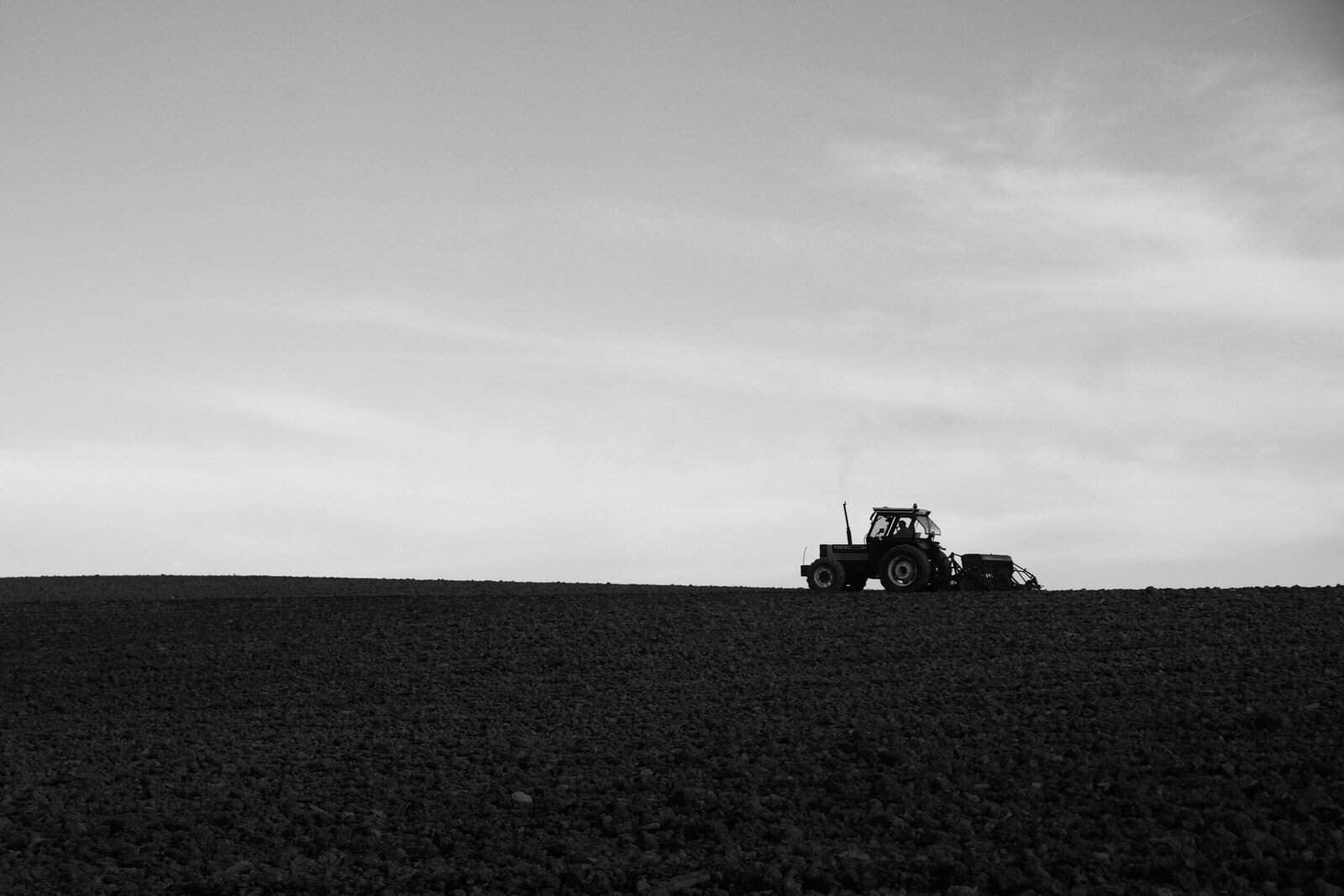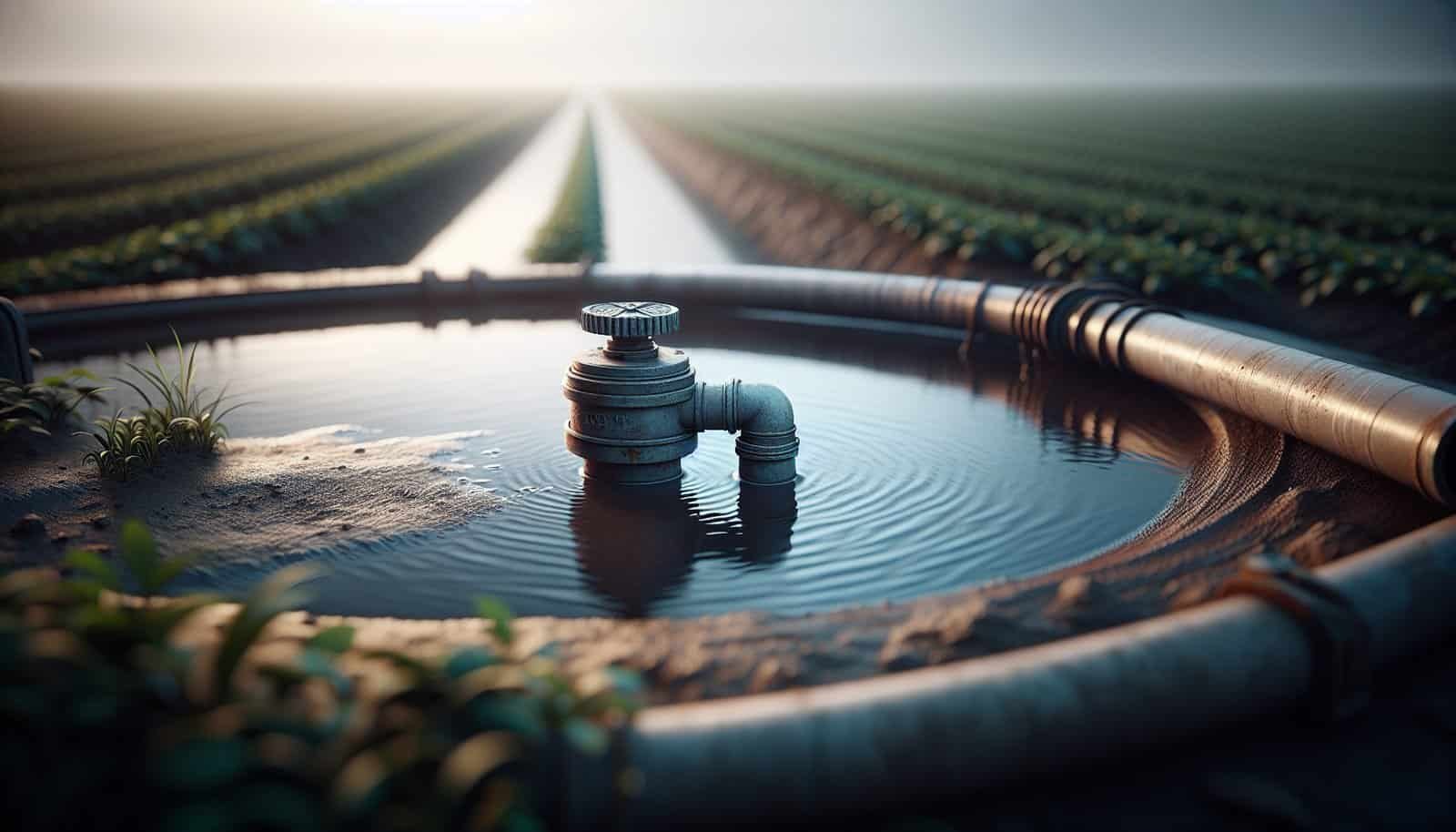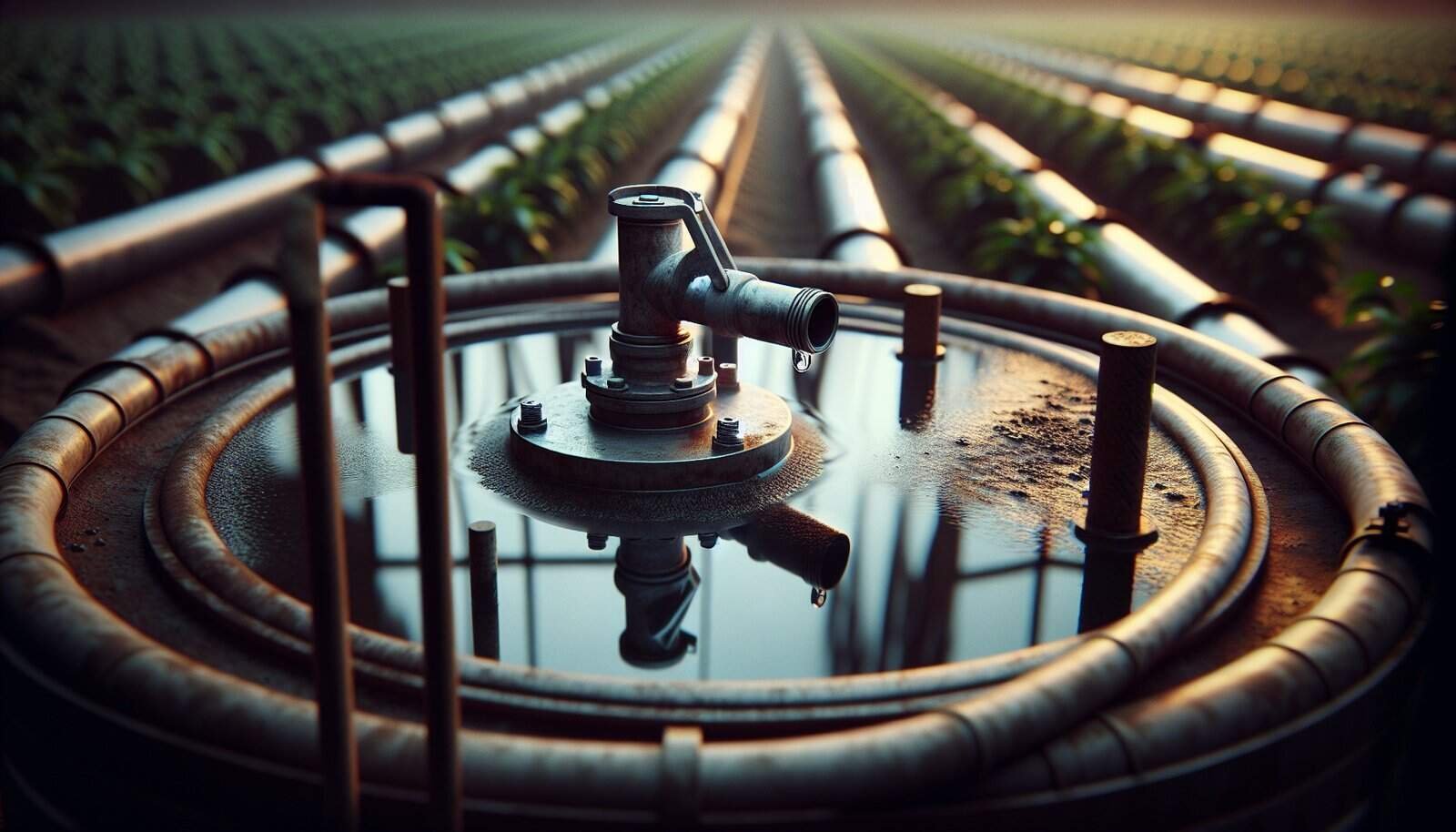Could nearby agricultural fields, livestock operations, or spreading of fertilizers be putting your well water at risk?

Can Nearby Agriculture Impact My Well Water Safety?
You rely on your well water for drinking, cooking, and daily living, so you want to understand any risks coming from surrounding agricultural activities. This article explains how agricultural practices can influence well water quality, how contaminants move, what to test for, how to prevent contamination, and what you can do if contamination is found.
How agriculture and groundwater are connected
Agriculture and groundwater are closely linked because much of what is applied to or produced on the land can eventually reach the subsurface. Water from rain or irrigation percolates through soil and can carry dissolved nutrients, chemicals, and microbes down to the aquifer. Understanding that connection helps you identify potential hazards and protect your well.
Why well owners need to pay attention
You may not see obvious signs that your well is affected until a health issue occurs or testing shows a problem. Because contaminants can be invisible and may take time to move, proactive testing and preventive measures are important. Your actions can reduce risks to your family’s health and to the reliability of your water supply.
Common agricultural contaminants and their sources
This section outlines typical contaminants linked to farming and livestock operations, with clear descriptions of how they get into groundwater. Knowing the specific sources helps you choose appropriate tests and treatments.
Nitrate and nitrite
Nitrates commonly come from synthetic fertilizers, manure, septic systems, and animal wastes. Nitrate is highly soluble and moves easily with groundwater; it is particularly dangerous for infants and pregnant women because it can cause methemoglobinemia (“blue baby syndrome”). Nitrite can form when nitrate chemically reduces during transport or in well water with certain conditions.
Pathogens (bacteria, viruses, protozoa)
Pathogens such as E. coli, fecal coliforms, Giardia, and Cryptosporidium come from animal manure, manure lagoons, and improper manure handling. These microbes can enter groundwater through cracks, shallow wells, poorly sealed well casings, or rapid recharge events after heavy rain. If your well is shallow or poorly constructed, you are more vulnerable.
Pesticides and herbicides
Many pesticides and herbicides used on crops, such as atrazine historically, can infiltrate soil and leach into groundwater. Some compounds persist longer than others, and their mobility depends on factors like soil type, rainfall, and the properties of the chemical. You may be exposed to these contaminants even if application occurs off your property.
Veterinary pharmaceuticals and hormones
Livestock operations may contribute antibiotics, antiparasitics, and growth hormones to the environment through manure spreading or runoff. Some of these compounds are biologically active at low concentrations and can contribute to antibiotic resistance and endocrine disruption in wildlife and potentially in people.
Salts and irrigation chemicals
Irrigation water, fertilizers, and soil amendments can increase dissolved salts in groundwater over time. High salinity affects taste, household plumbing, and agricultural reuse of groundwater. In coastal or irrigated regions, salt intrusion can be a significant issue.
Sediment and turbidity
Soil erosion from fields can increase sediment in surface water that recharges groundwater or enters shallow wells during recharge events. Elevated turbidity can shield pathogens from disinfection and indicate ongoing surface-groundwater interactions that raise contamination risk.
Organic matter and nutrients beyond nitrate
Phosphorus primarily binds to soil and is less mobile to groundwater than nitrate, but it can travel attached to sediments. Dissolved organic carbon and other nutrients may alter groundwater redox conditions and affect the mobility of metals and other elements.
How contaminants travel from fields to your well
Understanding the pathways and processes that move contaminants helps you assess risk and choose mitigation options. Movement depends on soil, geology, well construction, and hydrologic conditions.
Surface runoff and infiltration
When it rains or when irrigation exceeds soil infiltration capacity, water moves across the surface carrying manure, fertilizer, and pesticides. Some of this water finds depressions or recharge zones where it percolates downward, providing a pathway to groundwater. You should note areas uphill or upgradient that are likely to contribute recharge to your well.
Soil characteristics and adsorption
Soil texture, organic matter content, and mineralogy influence whether chemicals stick to soil particles (adsorption) or move freely in water. Sandy, coarse soils typically allow faster downward movement, increasing the chance of groundwater contamination. Clay and organic-rich soils can slow movement and retain some contaminants.
Depth to groundwater and aquifer properties
Shallow water tables mean contaminants have a short distance to travel before reaching the aquifer. Fractured bedrock or karst limestone allows rapid, direct pathways that bypass soil filtration. Confined aquifers with low permeability offer more protection than shallow unconfined aquifers.
Well construction and maintenance
Your well’s depth, casing, grout, cap, and sealing determine how much protection it offers. A poorly sealed or incorrectly constructed well allows surface water, pathogens, and chemicals to bypass soil filtration and directly enter the well. Wells located in depressions, near livestock yards, or close to infiltration areas are at greater risk.
Seasonal effects and extreme weather
Intense storms, snowmelt, and irrigation pulses can increase the transport of contaminants into groundwater. You should consider that high rainfall years or heavy irrigation seasons may elevate your well’s contamination risk and that negative trends can appear over time.
Health impacts associated with agricultural contaminants
This section explains potential health effects so you can appreciate why prevention and testing matter for you and your family. Effects vary by contaminant, concentration, exposure duration, and individual susceptibility.
Short-term illnesses from pathogens
If your well becomes contaminated with fecal bacteria or viruses, you may experience gastrointestinal illness—nausea, vomiting, diarrhea, and stomach cramps—often within hours to days of exposure. Infants, the elderly, and people with weakened immune systems are at higher risk for severe disease.
Long-term risks from chemicals
Chronic exposure to certain pesticides, nitrates, or other agricultural chemicals may increase risks of cancers, reproductive issues, endocrine disruption, and neurological problems. These effects typically occur over years of exposure and depend on the specific compound and dose.
Nitrate risk to infants and pregnant women
High nitrate levels are particularly hazardous for infants under six months because their digestive systems convert nitrate to nitrite more readily. Nitrite reduces the blood’s ability to carry oxygen, causing cyanosis and potentially life-threatening symptoms.
Antibiotic resistance and subtle effects
Trace levels of antibiotics in the environment can foster antibiotic-resistant bacteria, which can complicate treatment of infections. Hormonal compounds may have subtle developmental or reproductive effects, especially in sensitive populations.

Signs your well water might be affected
You can watch for observable signs that suggest agricultural impacts, though many contaminants are invisible and require testing to confirm.
Taste, odor, and appearance changes
Foul or musty tastes and odors, cloudiness, or discoloration after heavy rain may indicate contamination. A salty taste could indicate increased salinity from irrigation or salt intrusion. However, lack of any sensory change does not guarantee safety.
Increased illnesses in the household
If family members experience repeated gastrointestinal illnesses that correlate with rainfall or farming activity, your well may be a source. Keep a log of health events and note timing relative to weather or agricultural events.
Sudden changes after nearby activity
If new manure spreading, land leveling, or manure lagoon discharge occurs nearby and you notice water quality changes, this temporal association warrants testing. Construction or changes to neighboring wells and fields can alter pathways for contamination.
Well-specific indicators
If your well pump runs more frequently, yields less water, or shows increased turbidity during pumping, that may reflect groundwater changes or surface infiltration problems. Unusual sediment in the pressure tank or plumbing can be another indicator.
Testing: what to test for and how often
Regular testing is one of the most effective ways you can protect your family. This section gives practical guidance on which tests to order, how often, and what to do with results.
Basic minimum testing frequency
At a minimum, you should test private wells annually for total coliform bacteria, nitrates, and total dissolved solids or conductivity. If your well is near agricultural activity, consider more frequent and expanded testing.
Expanded testing list for agricultural influence
If agriculture is nearby, test for:
- Total coliforms and E. coli (bacterial contamination)
- Nitrate and nitrite (agricultural nutrients)
- Pesticide screen tailored to local use (e.g., atrazine, glyphosate, chlorpyrifos when relevant)
- Volatile organic compounds (VOCs) if pesticides or solvents are used nearby
- Veterinary medicines or hormones if livestock operations are close
- Turbidity and dissolved oxygen as indicators of surface influence
- Metals (like manganese, iron) if redox changes are suspected
Your local health department or extension service can advise which pesticides or pharmaceuticals are most likely in your area.
When to test after specific events
Test immediately after heavy rainfall or flooding, after manure application nearby, or any time you see a sudden change in water taste, odor, or clarity. Re-test after any corrective actions (e.g., shock chlorination) to verify effectiveness.
How to get samples analyzed
Use a certified laboratory for drinking water testing. Your state or local health department can provide a list of certified labs and proper sample collection procedures. For bacterial tests, follow time and temperature constraints and use sterile containers provided by the lab.
Interpreting test results
Compare results to public drinking water standards where applicable (e.g., EPA standards for nitrate at 10 mg/L as nitrogen and zero E. coli). For private wells, you are responsible for deciding actions if results exceed recommended limits. Consult public health or a water treatment professional to interpret complex results.
Table: Typical contaminants, likely agricultural sources, health concerns, and common treatments
| Contaminant | Likely agricultural source | Health concerns | Common treatment options |
|---|---|---|---|
| Nitrate/nitrite | Synthetic fertilizers, manure, septic systems | Infant methemoglobinemia, pregnancy risk | Ion exchange, reverse osmosis, distillation, blending |
| Total coliform/E. coli | Manure, direct infiltration, failing wells | GI illness, severe infection in vulnerable | Shock chlorination, UV, chlorination, well repair |
| Pesticides (e.g., atrazine) | Crop applications, drift, runoff | Potential carcinogenic/endocrine effects | Granular activated carbon (GAC), advanced oxidation, RO |
| Antibiotics/hormones | Livestock manure, CAFO effluent | Antibiotic resistance, endocrine effects | Advanced treatment (RO, ozonation); prevention is key |
| Salts (TDS) | Irrigation return, fertilizers | Taste, corrosion, plant stress | Blending with low-TDS water, RO, sourcing alternate supply |
| Turbidity/sediment | Erosion, runoff | Protects microbes from disinfection; aesthetic issues | Sediment filtration, wellhead protection, erosion control |

Preventive measures you can take immediately
You have several practical steps to reduce the chances that nearby agriculture will contaminate your well. Many are low-cost and effective.
Inspect and maintain your well
Have your well inspected by a licensed well contractor every few years. Ensure the casing is intact, the cap is secure, and the annular space is properly sealed. Fix cracks, gaps, or loose caps promptly. A properly grouted and sealed wellhead is a primary defense.
Verify well location and set-backs
If your well is within commonly recommended set-backs from barns, manure piles, and fields (often 50–200 feet depending on local codes), consider relocating the well if it’s too close. You can also request that neighbors respect buffer zones when applying manure or chemicals.
Protect the area around the well
Grade the ground so surface water drains away from the well, not toward it. Keep livestock, manure piles, chemical storage, and septic systems well away from the wellhead. Plant grass or other groundcover to reduce erosion.
Manage runoff and erosion
Work with neighbors or local conservation programs to reduce runoff and soil erosion uphill from your well. Contour farming, cover crops, grassed waterways, and riparian buffers reduce sediment and nutrient transport. If you own the land, adopt best management practices (BMPs) to limit transport.
Communicate with nearby farmers
You can ask local farmers what pesticides or manure management practices they use and when applications are scheduled. Cooperative communication can allow you to test after applications or request that they avoid spreading near your well when possible.
Shock disinfection if bacterial contamination occurs
If testing shows coliforms or E. coli, you can disinfect the well with a chlorine shock following guidance from health departments or a licensed well contractor. Re-test after disinfection to ensure success.
Treatment options if contamination is confirmed
Treatment options depend on the contaminant type, concentration, and your water use. Some treatments are point-of-use (POU) and household-level; others are point-of-entry (POE) or well-level.
Treating microbial contamination
- Shock chlorination can eliminate bacteria in the well and immediate plumbing, but it may not remove contamination in the aquifer.
- Continuous disinfection systems (chlorination feed) can maintain a disinfectant residual but require careful monitoring and correct dosing.
- Ultraviolet (UV) systems effectively disinfect bacteria, viruses, and protozoa at the point-of-use, but are ineffective if water is turbid or has high organic matter unless preceded by filtration.
Reducing nitrates
- Reverse osmosis (RO), ion exchange (nitrate-selective resins), and distillation effectively reduce nitrate concentrations. RO and ion exchange are common for household systems.
- Blending high-nitrate wells with low-nitrate sources can also achieve acceptable concentrations if alternative water is available.
- Well replacement or deepening to tap a less-impacted aquifer may be an option if geologically feasible.
Removing pesticides and organic contaminants
- Granular activated carbon (GAC) filters can adsorb many pesticides and organic chemicals but must be matched to the contaminant and replaced on a schedule.
- Advanced oxidation processes (AOPs), reverse osmosis, and specialized adsorption media can handle specific compounds; professional selection is recommended.
Addressing salinity and TDS
- Reverse osmosis is effective for lowering TDS for drinking water, though it produces a brine waste stream.
- For irrigation, you may need to shift crops or use salt-tolerant varieties; in some cases, finding an alternative water source is required.
Considerations before installing treatment
Treatments can be expensive, require maintenance, and may not address all contaminants. Always use certified equipment, size systems properly, and arrange routine service and water testing to verify performance.
Table: Typical treatments and maintenance considerations
| Treatment | What it removes | Maintenance & considerations |
|---|---|---|
| Shock chlorination | Bacteria | Immediate action; may need repeat; does not protect against aquifer contamination |
| UV disinfection | Bacteria, viruses, protozoa | Requires pre-filtration if turbid; bulb replacement and electricity |
| Reverse osmosis | Nitrates, salts, many organics | Low maintenance but wastes water; periodic membrane replacement |
| Ion exchange | Nitrate, hardness | Regenerant salt use and disposal; operational costs |
| Granular activated carbon | Pesticides, organics | Media replacement or reactivation; pre-test to confirm effectiveness |
| Continuous chlorination | Bacteria | Ongoing chemical handling; must manage by-products and dosing |

Working with local agencies and programs
You don’t have to handle this alone. Local and state agencies, extension services, and conservation programs can help with testing, technical advice, and cost-share programs.
Contact your local health department
Your local health department can advise on certified labs, sample collection, and health implications. They may offer or subsidize testing for private wells in certain situations.
Cooperative Extension and conservation districts
Extension agents can help you interpret agricultural practices, recommend tests based on local pesticide use, and suggest BMPs. Conservation districts often administer cost-share or technical assistance programs to install buffers, manage manure, or reduce runoff.
State well codes and regulations
Well construction standards and setback requirements vary by state. If you suspect a neighbor’s practices are violating local rules (e.g., manure spreading too close to private wells), your health department or enforcement agency can investigate.
Legal and insurance considerations
If agricultural practices cause contamination that requires well replacement or treatment, you may need to consult legal counsel or your homeowner’s insurance policy. Keep detailed records of testing, contacts, and events to support any claims.
Practical checklist you can use right now
This checklist helps you prioritize actions. Follow a few at a time so the process isn’t overwhelming.
- Test your well annually for coliform, nitrate, and TDS; expand testing if agriculture is nearby.
- Inspect wellhead for cracks, loose cap, or pooling water, and repair promptly.
- Re-grade soil around the well so water drains away from the casing.
- Keep manure, chemical storage, livestock, and septic systems at recommended distances from the well.
- Ask neighbors about planned manure applications or pesticide use so you can test post-application.
- Enroll in local conservation programs to reduce runoff or install buffers uphill.
- If tests show contamination, consult a licensed well contractor and public health officials to select treatment or repair options.

Questions to ask contractors and laboratories
When hiring professionals or sending samples, the right questions improve outcomes.
For laboratories
- Are you state-certified for drinking water analysis?
- What are the sample container, preservation, and chain-of-custody requirements?
- How long until results, and how are results reported?
- Can you test for specific pesticides or veterinary compounds used locally?
For well contractors and treatment professionals
- Are you licensed and insured in this state?
- Can you provide references from local clients?
- What warranty and maintenance services do you offer?
- Can you design a solution based on my water test results and household needs?
Cost considerations and funding help
Costs vary widely, but understanding typical ranges helps you plan.
Testing costs
- Basic bacterial and nitrate tests: often $25–$75 per test, depending on lab and region.
- Expanded pesticide or pharmaceutical screens: $100–$500+ per compound or panel.
- VOC testing: $100–$300 per sample.
- Specialized analyses may be significantly more.
Treatment costs
- Shock chlorination: low cost (under $200 for professional service).
- Point-of-use RO systems: $500–$3,000 installed, plus annual maintenance.
- Whole-house systems (ion exchange, GAC): $2,000–$10,000 depending on size and complexity.
- Well repair, replacement, or deepening: can range from a few thousand dollars to $10,000–$30,000 or more.
Financial assistance
Look for federal or state programs that fund well testing, well replacement for low-income households, or conservation practices that reduce contamination. Conservation districts, USDA Natural Resources Conservation Service (NRCS), and state environmental agencies often have programs.
Long-term monitoring and community action
Your well’s safety benefits from ongoing attention and community-level measures that reduce agricultural impacts at the source.
Establish a monitoring schedule
Set a calendar for annual basic testing and additional tests after high-risk events. Keep records of results, maintenance, and any communications with neighbors or agencies.
Advocate for local best practices
Getting farmers and neighbors to adopt BMPs—cover crops, buffer strips, proper manure handling—reduces overall risk. You can participate in local watershed groups, conservation district meetings, or community advisory councils.
Consider alternative water sources if necessary
If contamination persists despite mitigation, you may need to consider connecting to a public water supply, drilling a deeper well into a protected aquifer, or establishing a reliable POU treatment system for drinking and cooking.
Final thoughts and next steps
You can significantly reduce your risk of well contamination from nearby agriculture by staying informed, testing regularly, improving well protection, and communicating with neighbors and local agencies. Start with a current inspection and a basic water test, then expand your strategy based on results and local conditions. Protecting your well is an ongoing process, and early action can save money, health problems, and long-term stress.
If you want, tell me your well’s situation (distance to fields or livestock, depth, any recent changes) and I can suggest specific tests and next steps tailored to your circumstances.
